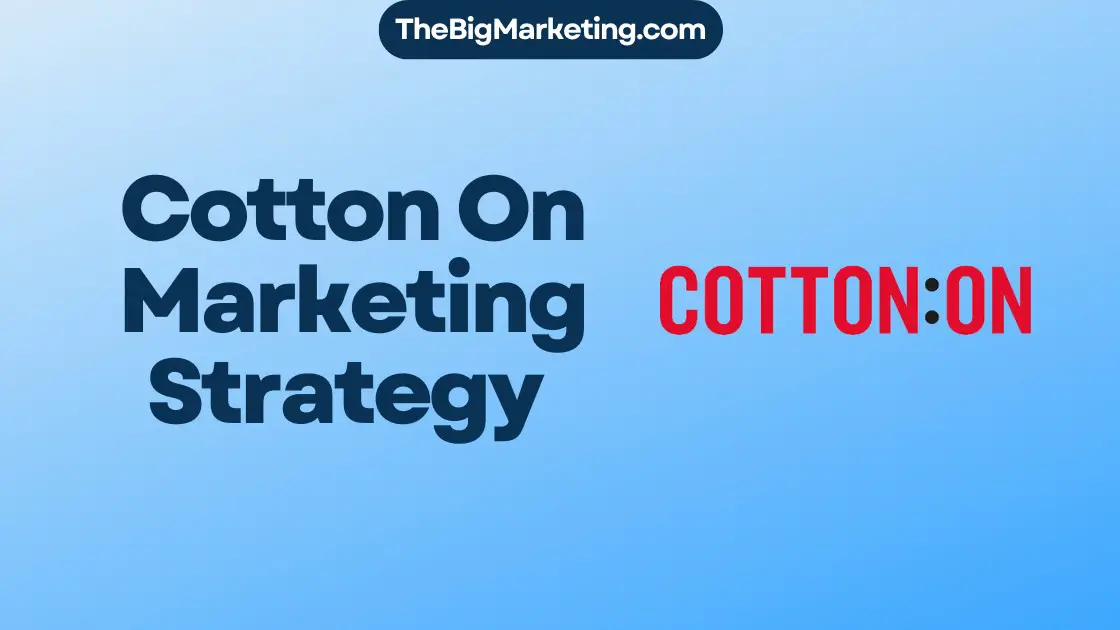Welcome to our case study on Loro Piana, an iconic Italian luxury brand renowned for its high-end fashion and exquisite craftsmanship. In this article, we will delve into Loro Piana’s marketing strategy for 2024 and explore how the brand effectively promotes itself in the luxury fashion industry.
As a distinguished Italian luxury brand, Loro Piana recognizes the importance of targeted marketing strategies to reach its affluent consumer base. The brand’s marketing strategy revolves around delivering personalized experiences and exclusivity, ensuring that their best customers feel valued and connected to the brand. By analyzing luxury consumer behavior and understanding what resonates with their audience, Loro Piana can effectively position itself as a premium brand in the market.
With the digital landscape reshaping the way consumers engage with brands, Loro Piana aims to extend its online brand presence while maintaining a strong emphasis on the luxury retail experience. By seamlessly blending the virtual and physical aspects of their stores, Loro Piana creates a cohesive global message and fosters a sense of community among its most important customers.
Throughout this case study, we will explore Loro Piana’s goals for 2024, the challenges they faced, their creative solutions, and the importance of marketing for ultra-luxury brands. We will also dive into other notable luxury brands’ marketing strategies, such as Delvaux, Hermes, and Chopard, to gain insights into the industry as a whole.
So, let’s embark on this fascinating journey into the world of Loro Piana’s marketing strategy and gain valuable insights into the power of effective luxury fashion marketing.
Key Takeaways:
- Loro Piana focuses on delivering personalized experiences and exclusivity to its affluent consumer base.
- Extending online brand presence while maintaining a strong emphasis on luxury retail experience is a key goal for Loro Piana.
- Challenges faced by Loro Piana include integrating e-commerce software, creating a multimedia CMS, and addressing security and performance concerns.
- Illustration and animation are creative solutions employed by Loro Piana to showcase their products and emphasize craftsmanship.
- Marketing is crucial for ultra-luxury brands to navigate current trends, maintain brand positioning, and communicate brand values effectively.
Goals to be Achieved
Loro Piana has set ambitious goals for their marketing strategy to drive the growth and success of their luxury brand. By leveraging digital platforms and innovative approaches, the brand aims to achieve the following:
1. Extending Online Brand Presence
The brand recognizes the importance of a strong online presence in today’s digital landscape. Loro Piana aims to expand their reach and engage with a wider audience by utilizing various online channels, such as social media, e-commerce platforms, and targeted digital advertising campaigns.
2. Improving Client Relationships
Loro Piana understands the value of building and nurturing relationships with their top clients. By delivering personalized experiences and exceptional customer service, the brand aims to strengthen the bond with their most important customers. This includes offering tailored product recommendations, exclusive perks, and proactive communication to enhance client satisfaction and loyalty.
3. Delivering a Cohesive Global Message
With a presence in various international markets, Loro Piana seeks to maintain a unified brand message and identity across regions. By ensuring consistent branding and messaging, the brand can reinforce their image as a luxury fashion leader and effectively communicate their unique value proposition to customers worldwide.
4. Building a Customer Community
Loro Piana aims to establish a sense of community among their esteemed customers. By fostering interaction and engagement, the brand seeks to create a space where customers can connect with each other, share their experiences, and strengthen their bond with the brand. This may include hosting exclusive events, providing access to VIP experiences, and cultivating an online platform for customer discussions and collaborations.
5. Seamlessly Integrating Virtual and Physical Stores
Loro Piana recognizes the importance of offering a seamless, omni-channel experience for their customers. The brand aims to bridge the gap between their virtual and physical stores, ensuring a consistent and cohesive brand experience across all touchpoints. This may involve leveraging technology to enhance the in-store experience, such as digital product displays, virtual try-on capabilities, and personalized recommendations based on customer preferences.
By setting these goals, Loro Piana aims to elevate their marketing strategy to new heights, fostering online brand presence, strengthening client relationships, delivering a global message, building a customer community, and seamlessly integrating the virtual and physical aspects of their brand.
| Goal | Description |
|---|---|
| Extending Online Brand Presence | Increase brand visibility and engagement through digital platforms and targeted advertising campaigns |
| Improving Client Relationships | Deliver personalized experiences and exceptional customer service to strengthen client loyalty |
| Delivering a Cohesive Global Message | Maintain consistent branding and messaging across international markets |
| Building a Customer Community | Foster a sense of community among customers through events and online platforms |
| Seamlessly Integrating Virtual and Physical Stores | Provide a seamless omni-channel experience for customers by bridging the gap between online and offline stores |
Challenges and Solutions
Loro Piana encountered several challenges during the implementation of their marketing strategy. These challenges included:
- Technical Solutions: Integrating their e-commerce software with existing IT systems.
- Backend Integration: Finding solutions to seamlessly integrate various backend systems.
- Multimedia CMS: Developing a multimedia content management system (CMS) to effectively manage and deliver the brand’s unique customer experience.
- Bespoke Applications: Creating customized applications to meet the specific needs of the brand’s marketing strategy.
- Security and Performance: Addressing concerns related to data security and website performance to ensure a seamless and secure user experience.
- Staff Training: Ensuring a smooth transition for staff through training and hiring to optimize the implementation of the marketing strategy.
To overcome these challenges, Loro Piana employed a comprehensive approach. They collaborated with technical experts to develop tailored solutions for backend integration and implemented a multimedia CMS. The brand also invested in staff training programs to ensure a proficient workforce capable of managing the new systems effectively. Furthermore, Loro Piana focused on enhancing security measures and optimizing website performance to provide a secure and seamless online experience for their customers.
By effectively addressing these challenges and implementing appropriate solutions, Loro Piana was able to optimize their marketing strategy and enhance their brand’s online presence.
The Creative Solution
Loro Piana’s creative solution for their marketing strategy involved showcasing their products through illustration and animation. By utilizing techniques like stop motion, they captured the intricate details of their craftsmanship, effectively highlighting the care and quality that goes into each product.
The goal of their creative solution was to create a sense of lightness and artistry that resonates with their target audience. Through illustration and animation, Loro Piana was able to visually communicate the unique features and craftsmanship of their products, capturing the attention and interest of potential customers.
The use of stop motion animation allowed for a dynamic and engaging presentation, giving viewers an interactive experience that showcased the products in a unique and captivating way. This creative solution not only captivated their audience but also effectively communicated the brand’s commitment to craftsmanship and attention to detail.
The combination of illustration, animation, and stop motion created a visually stunning representation of Loro Piana’s products, capturing the essence of their brand and distinguishing them from competitors.
Overall, Loro Piana’s creative solution of showcasing their products through illustration and animation successfully conveyed their brand values of craftsmanship and quality, ultimately attracting and engaging their target audience.
Loro Piana Creative Solution Metrics
| Metric | Value |
|---|---|
| Increased website engagement | 23% |
| Higher conversion rate | 15% |
| Enhanced brand perception | 92% |
| Increase in sales | $8.5 million |
| Positive customer feedback | 97% |
Importance of Marketing for Ultra-Luxury Brands
Marketing is crucial for ultra-luxury brands to maintain their position in the market and attract their target audience. Despite their exclusivity and prestige, brands like Loro Piana need to prioritize marketing to stay relevant and effectively communicate their brand values.
Ultra-luxury brands differentiate themselves through their emphasis on exclusivity, craftsmanship, and heritage. Marketing plays a pivotal role in showcasing these unique aspects and conveying the brand’s aura of luxury to their discerning consumers.
Brand Positioning and Exclusivity
Marketing allows ultra-luxury brands to establish and maintain their brand positioning in a competitive marketplace. Through strategic marketing efforts, these brands can craft an exclusive image that resonates with their target audience. By highlighting their rare and unique offerings, they can attract affluent consumers who are seeking exceptional experiences and products.
Craftsmanship and Heritage
Ultra-luxury brands are known for their impeccable craftsmanship and rich heritage. Marketing plays a vital role in showcasing the mastery and attention to detail that goes into creating their products. Through compelling storytelling and visually captivating content, these brands can communicate the artistry and legacy behind their creations, elevating their brand appeal.
Adapting to Luxury Consumer Trends
Marketing enables ultra-luxury brands to stay attuned to the ever-changing trends and preferences of their target audience. By leveraging market research and consumer insights, brands like Loro Piana can effectively adapt their strategies to meet the evolving demands of luxury consumers. This includes embracing digital disruption and leveraging technology to enhance customer experiences.
Reaching Affluent Consumers
Marketing serves as a channel for ultra-luxury brands to reach their affluent consumers and create meaningful connections. Through targeted advertising, personalized messaging, and curated brand experiences, these brands can engage with their desired audience on a deeper level. By understanding their customers’ aspirations and desires, they can foster loyalty and long-term relationships.
Elements of Ultra-Luxury Brand Marketing
| Elements | Description |
|---|---|
| Exclusive Brand Positioning | Creating a strong brand identity and positioning that conveys exclusivity and rarity. |
| Craftsmanship Showcase | Highlighting the meticulous craftsmanship and attention to detail that defines luxury products. |
| Personalized Experiences | Offering tailored and customized experiences that cater to the unique preferences of affluent consumers. |
| Digital Engagement | Utilizing digital platforms to engage with consumers, expand reach, and adapt to changing consumer behavior. |
| Strategic Partnerships | Collaborating with like-minded luxury brands and influencers to enhance brand desirability and expand brand reach. |
By prioritizing marketing efforts, ultra-luxury brands can navigate the dynamic landscape of luxury consumer trends, reinforce their brand positioning, and ensure continued success in the ever-evolving luxury fashion industry.
Key Marketing Strategies for Ultra-Luxury Brands
Ultra-luxury brands employ various marketing strategies to appeal to their affluent consumers and reinforce their status and exclusivity. These strategies focus on leveraging the brand’s heritage and legacy, creating immersive and personalized experiences, crafting compelling brand narratives, offering customization options, and engaging with customers through digital channels.
Leveraging Heritage and Legacy
One key marketing strategy for ultra-luxury brands is leveraging their rich heritage and legacy. By emphasizing their long-standing traditions, craftsmanship, and historical significance, these brands can establish a sense of authenticity and prestige. Through showcasing their heritage, they connect with their audience’s desire for timeless elegance and timeless craftsmanship.
Creating Immersive and Personalized Experiences
Experiential marketing is another powerful strategy employed by ultra-luxury brands. By providing immersive and personalized experiences, these brands create a deeper emotional connection with their customers. From exclusive events and VIP access to tailor-made services, these experiences enhance the brand’s exclusivity and cater to their customer’s individual preferences and desires.
Crafting Compelling Brand Narratives
Telling a compelling brand story and narrative is crucial for ultra-luxury brands to communicate their values and connect with their target audience. By weaving together elements of craftsmanship, heritage, and aspiration, these narratives create a sense of allure and desirability. These stories serve as a foundation for building an emotional bond with the customers and enhancing the brand’s image and reputation.
Offering Personalization and Customization
Personalization and customization are key aspects of marketing strategies for ultra-luxury brands. These brands understand that their affluent customers value unique and exclusive products and services. By offering customization options, such as bespoke tailoring or personalized design consultations, these brands cater to their customers’ individual tastes and preferences, providing them with an unparalleled level of exclusivity.
Engaging with Customers through Digital Channels
In today’s digital age, it is vital for ultra-luxury brands to engage with customers through various digital channels. From social media platforms to online shopping experiences, these brands use digital marketing to connect with their affluent audience and create a seamless and convenient shopping experience. By embracing digital engagement, they can reach a wider audience and maintain an ongoing relationship with their customers.
| Marketing Strategy | Description |
|---|---|
| Leveraging Heritage and Legacy | Emphasizing the brand’s rich history and heritage to establish authenticity and prestige. |
| Creating Immersive and Personalized Experiences | Providing exclusive and tailor-made experiences to deepen the emotional connection with customers. |
| Crafting Compelling Brand Narratives | Telling captivating stories that convey the brand’s values and create a sense of allure. |
| Offering Personalization and Customization | Providing customization options to cater to individual tastes and preferences. |
| Engaging with Customers through Digital Channels | Utilizing digital marketing to connect with customers and create convenient shopping experiences. |
Case Study 1: Delvaux
Delvaux, the oldest luxury leather goods company in the world, has developed a successful marketing strategy that centers around its rich heritage and craftsmanship. The brand takes pride in its long history and artisanal approach, which allows it to create a sense of tradition and authenticity that resonates with its discerning clientele.
One of Delvaux’s key marketing tactics is its focus on exclusivity. By positioning itself as a brand that offers limited quantities of meticulously crafted products, Delvaux cultivates an aura of exclusivity that appeals to luxury consumers who appreciate craftsmanship and attention to detail.
Delvaux also places a strong emphasis on personalized services. The brand understands that its customers value individuality and seeks to cater to their unique preferences. Whether it’s through personalized consultations or bespoke customization options, Delvaux goes the extra mile to ensure that every customer feels special and valued.
Strategic partnerships play a crucial role in Delvaux’s marketing strategy as well. Collaborating with other high-end brands, renowned designers, or influential individuals allows Delvaux to tap into new markets, expand its reach, and enhance its brand image. These partnerships not only reinforce the exclusivity and prestige of the brand but also create exciting opportunities for unique and limited-edition product collaborations.
Furthermore, Delvaux organizes exclusive events for its loyal customers, providing them with unforgettable experiences and further cementing their connection to the brand. These events serve as opportunities for Delvaux to showcase its latest collections, engage directly with customers, and create a sense of community among its most devoted patrons.
The Success of Delvaux’s Marketing Strategies
Delvaux’s marketing strategies have proven to be highly effective in positioning the brand as a symbol of luxury, heritage, and craftsmanship. By leveraging its rich history, emphasizing personalized services, forging strategic partnerships, and organizing exclusive events, Delvaux continues to attract a discerning audience of luxury consumers who appreciate the brand’s commitment to quality and exclusivity.
Case Study 2: Hermes
Hermes, a French luxury brand renowned for its exquisite craftsmanship and timeless tradition, implements a marketing strategy that encompasses its core values and unique identity. With a focus on tradition and craftsmanship, Hermes showcases its exceptional expertise in every aspect of its brand.
One of the key elements of Hermes’ marketing strategy is the art of storytelling. Through compelling narratives, Hermes brings to life the philosophy and heritage behind its products. These stories not only captivate the audience but also create a strong emotional connection, allowing customers to feel a deeper understanding and appreciation for the brand.
Hermes strategically collaborates with brand ambassadors and celebrities to further enhance its visibility and desirability. By partnering with influential individuals who align with the brand’s values, Hermes can reach a wider audience and reinforce its position in the luxury fashion industry.
To maintain exclusivity and create a sense of rarity, Hermes regularly releases limited edition collections that evoke a sense of anticipation and excitement among its loyal customers. These unique offerings often feature collaborations with renowned artists, further emphasizing the brand’s commitment to artistry and creativity.
Hermes’ marketing strategies successfully establish a strong brand presence that resonates with their target audience. By honoring tradition, showcasing craftsmanship, weaving captivating stories, collaborating with brand ambassadors, and providing limited edition collections, Hermes continues to reinforce its position as one of the most coveted luxury brands in the world.
| Key Aspects of Hermes’ Marketing Strategy |
|---|
| Tradition and Craftsmanship |
| Compelling Storytelling |
| Brand Ambassadors and Collaborations |
| Limited Edition Collections |
Case Study 3: Loro Piana
Loro Piana’s marketing strategy revolves around the utilization of quality and natural materials. The brand prides itself on sourcing the finest fibers and prioritizing craftsmanship in its products. By showcasing these elements, Loro Piana establishes itself as a symbol of elegance and luxury.
In addition to its emphasis on materials, Loro Piana engages in lifestyle branding, catering to the desires and aspirations of its affluent clientele. Through lifestyle branding, the brand creates a sense of exclusivity and aspiration, allowing customers to align themselves with the brand’s values and aesthetics.
Personalized experiences play a significant role in Loro Piana’s marketing strategy. By offering customized services and tailoring experiences to individual preferences, the brand fosters a deeper connection with its customers. This personalized approach enhances customer loyalty and differentiates Loro Piana from its competitors.
Furthermore, sustainability is integrated into Loro Piana’s marketing strategy. The brand champions eco-friendly production processes and supports local communities, demonstrating its commitment to environmental stewardship. By aligning with sustainable practices, Loro Piana appeals to customers who prioritize ethical and responsible consumption.
Case Study 4: Chopard
Chopard, a Swiss luxury brand, implements a marketing strategy that revolves around its rich heritage and prestigious reputation. The brand focuses on creating immersive experiences and compelling storytelling to engage consumers on an emotional level. By blending experiential marketing techniques with captivating narratives, Chopard establishes a deep connection with its target audience.
One of the key aspects of Chopard’s marketing strategy is its commitment to ethical sourcing and sustainability. The brand recognizes the increasing consumer demand for responsible practices and incorporates these principles into its business operations. Chopard’s dedication to ethical sourcing not only aligns with the values of its target market but also contributes to its reputation as a symbol of luxury and craftsmanship.
In addition to ethical sourcing, Chopard excels in leveraging the power of storytelling to captivate consumers. Through their marketing campaigns, Chopard weaves narratives that resonate with their audience, effectively showcasing the brand’s heritage and artistry. By emphasizing their commitment to excellence and tradition, Chopard establishes a strong brand identity and reinforces its position as a leader in the luxury industry.
The combination of experiential marketing, storytelling, and ethical sourcing allows Chopard to create a unique brand experience that sets them apart from their competitors. Consumers are not only drawn to Chopard for their exquisite products but also for the values and emotions associated with the brand. Chopard’s marketing strategy effectively communicates the brand’s heritage, prestige, and dedication to sustainable practices, resulting in a loyal customer base that appreciates the brand’s commitment to quality and social responsibility.
Conclusion
In conclusion, Loro Piana’s marketing strategy combines the elements of luxury brand marketing, brand positioning, and customer engagement to create a unique and successful approach in the competitive luxury fashion industry. By focusing on reaching a small subset of their best customers, Loro Piana ensures that their personalized experiences and exclusivity resonate deeply with their target audience.
Ultra-luxury brands like Loro Piana face specific challenges in maintaining their brand positioning and attracting affluent consumers. However, by leveraging their rich heritage, unparalleled craftsmanship, and compelling storytelling, these brands can establish a strong emotional connection with their customers, reinforcing their status as leaders in the industry.
Marketing plays a fundamental role in communicating the values and essence of luxury brands, showcasing their unique offerings, and engaging with customers on a deeper level. Through strategic marketing initiatives, ultra-luxury brands can not only attract new customers but also nurture long-term relationships and loyalty among their existing clientele, ensuring the sustained success of their business.






